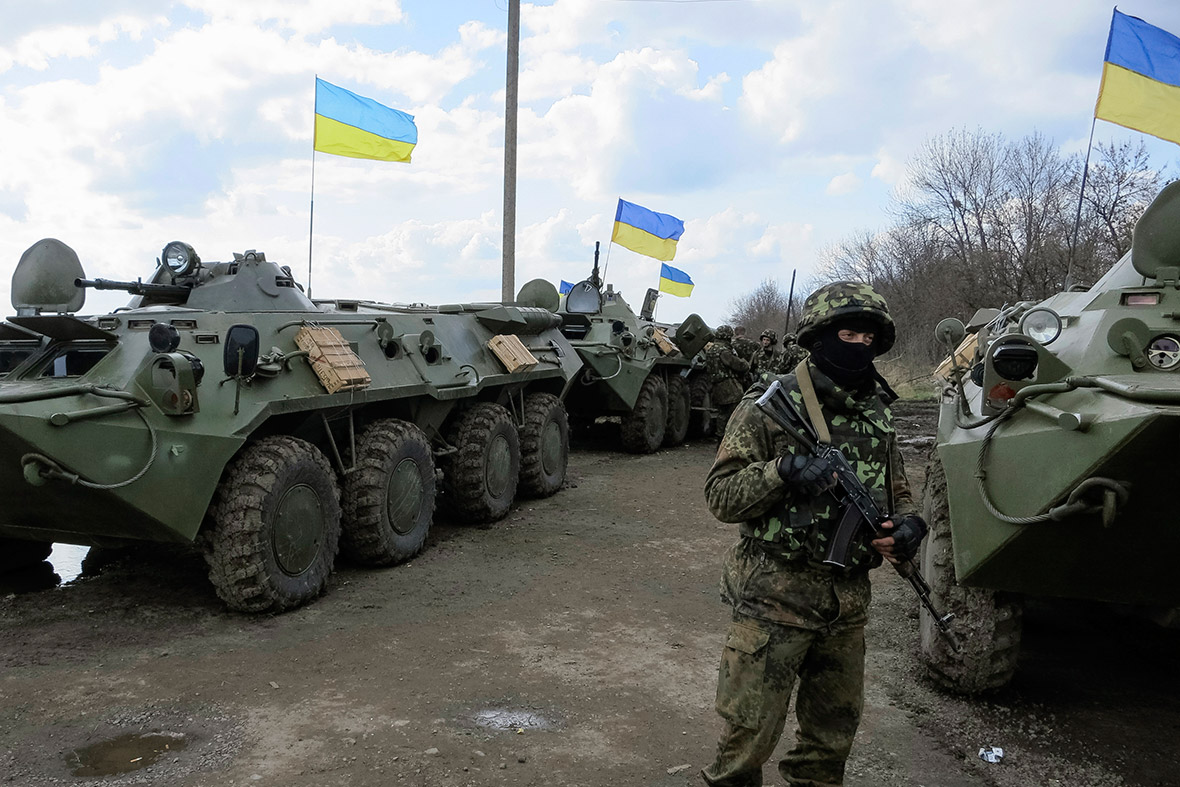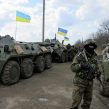
The Southeast Unrest and the Ukrainian Military
Publication: Eurasia Daily Monitor Volume: 11 Issue: 91
By:

On May 13, armed pro-Russian rebels ambushed a Ukrainian military convoy transporting ammunition on the outskirts of the flashpoint city of Kramatorsk, killing seven paratroopers of the 95th airborne brigade and wounding seven more (Kyiv Post, May 13). The recent series of separatist militants’ successes and Ukrainian casualties—including this one, which might have been tactically avoided—call into question the performance of Ukraine’s military and political authorities in the counter-terrorist operation against armed separatists in the southeast. This, in turn, raises deeper questions about the state of the Ukrainian military and its prospects.
The Ukrainian Anti-Terrorist Operation (ATO) itself was started a month ago on April 13. According to Ukrainian military analyst and blogger Dmitri Tymchuk, after the April 17 Geneva accord, the ATO became a “stabilization operation,” its main objective being the encirclement of the towns and neighborhoods where separatists were concentrated as well as arranging checkpoints and patrols—hence the Ukrainian Armed Forces have been the key responsible force (“Challenges and Risks,” Center of Army, Conversion and Disarmament Studies, Issue 1, April 24).
The mounting casualties notwithstanding, the Ukrainian military’s overall readiness notably improved within a short period after the Crimean crisis. First of all, challenged by the threat of a Russian invasion of mainland Ukraine, the acting Ukrainian government was able to increase the army’s manpower by calling up the reserves in mid-March. And by May 6, the parliament approved acting president Oleksandr Turchynov’s decree to rotate mobilized soldiers through a second wave of the reserve call-up. Whereas, five days earlier, Turchynov resumed the national draft to the Ukrainian Armed Forces, which was going to be canceled as part of a transition to an all-volunteer professional force initiated by Viktor Yanukovych’s administration (UNIAN, May 1, 6). Several Ukrainian military analysts believe that the mobilized reserve could reinforce the country’s military manpower to 700,000 in war time—currently, there are about 122,000 men serving in the Ukrainian Armed Forces (Author’s interview with Ukrainian government source, April 21).
Until now, military spending has been a significant problem. By law, state budget allocations for the Armed Forces should equal not less than 2 percent of the country’s GDP, but in reality, for the past several years, the share of financing was at about 1 percent of GDP (data available in The Ministry of Defense White Book, www.mil.gov.ua). Moreover, the Ukrainian military still lags behind the Russian military and insurgents in southeastern Ukraine in equipment. Quoting experts of the elite Ukrainian Security Service (SBU) Alpha unit and the External Intelligence Service, Valentyn Badrak—the director of the Center of Army, Conversion and Disarmament Studies—wrote that “Russian groups” in the southeast have far superior systems of communications, reconnaissance and radio-electronic jamming, which led to the insurgents’ successful ambush of the group of SBU Counter-Terrorist Center officers on April 13 (“Challenges and Risks,” Center of Army, Conversion and Disarmament Studies, Issue 1, April 24).
But the inadequate public funding for the military is being supplemented by financing coming from private sources, including Ukrainian oligarchs and “crowdfunding.” According to the Ukrainian Ministry of Defense, around $10 million was transferred by Ukrainians to special accounts to help the military (https://www.kmu.gov.ua/control/uk/publish/article?art_id=247288939&cat_id=244277212). Apart from this, a government-created public fundraising campaign empowering volunteer activists has also helped the Ukrainian military with pressing needs such as body armor, helmets, communications equipment and military-duty laptops. These volunteers have raised the funds and delivered the equipment to specific units (https://censor.net.ua/video_news/283014/volonter_pod_nikom_krylya_feniksa_sobral_okolo_2_mln_grn_dlya_ukrainskoyi_armii_my_doljny_vernut_svoyi).
Likewise, military recruitment and the creation of militia-type units has been supplementing the Ukrainian Army’s lack of manpower. The three main examples are the territorial defense battalions “Dnepr,” “Donbas” and “Azov,” created in a number of Ukraine’s regions. Although these units increase the country’s military readiness, their creation also makes military governance more complex and creates the risks of “private armies” appearing in Ukraine. In a Kyiv Post interview (May 14), the vice commander of the Donbas Battalion—who has been critical of the Ukrainian regular military being deployed to Slovyansk—openly acknowledged that despite receiving uniforms with Ukrainian Army patches, the Battalion was not affiliated with the Army nor with any far-right groups, “They do, however, take some orders from “someone close to [acting Interior Minister Arsen] Avakov” (https://www.kyivpost.com/content/ukraine/volunteer-donbass-battalion-takes-up-arms-to-defend-ukraine-defeat-separatists-347764.html). One of the commanding officers of the Azov Battalion, on the other hand, complained about the lack of combat coordination with Internal Troops (currently re-integrated with the National Guard) (Interfax-Ukraine, April 14). The serious challenge posed by maintaining such unconventional military formations was underscored by the death of two unarmed civilian separatist protesters on May 11 in Krasnoarmeysk, which the media initially ascribed to the Dnepr Battalion—though this was later denied by the interior ministry (https://www.unian.net/politics/916722-v-mvd-otritsayut-
prisutstvie-dnepra-v-krasnoarmeyske-a-strelbu-rassleduyut-kak-umyishlennoe-ubiystvo.html). It is not clear at the moment which unit was responsible for these gunshots.
Critical comments have also recently been appearing in the Ukrainian media pertaining to problems of command and control as well as issues of political and military leadership. On May 14, Ukrainian journalists posted a remarkable overview and commentary regarding the management problems of the Anti-Terrorist Operation, including recommendations to shift the command from the SBU to the Armed Forces (https://uainfo.org/yandex/322349-vsya-pravda-o-tom-kak-prohodit-ato.html). Moreover, experts of the Center for Army, Conversion and Disarmament Studies, also noted that, at its inception, the ATO revealed “acute personnel issues in both top management and critical decision making and in execution—at some critical units, no professionals were left at all (“Challenges and Risks,” April 24).
Interestingly, according to Valentyn Badrak, military experts from the Army recommend utilizing mixed units for the ATO that would include a core of special operations officers and cover groups composed of veteran civilian experts on counter-insurgency issues (“Challenges and Risks,” April 24). This is an indication that Ukrainian theorists are increasingly considering a greater use of civilians in warfare, which would be in line with some popular hybrid warfare concepts.
Until recently, the ATO has had limited success with achieving population control in areas where it has operated, and in Donetsk and Luhansk oblasts more generally. However, political factors such as Russia cautiously refraining at this stage from military intrusion in the southeast and the beginning of “The National Round Table” political process in Ukraine on May 14 (with the next Round Table planned in Donetsk on May 19) help diminish some of the Ukrainian military’s problems in the short term. And this leaves open the chance for a future political resolution of the crisis.




